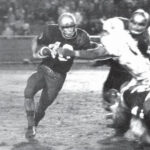During World War I, the United States military adopted and utilized a range of uniforms tailored to the diverse environments of the European and Pacific theaters. These uniforms were designed for functionality and durability, reflecting the needs of soldiers in varied combat conditions.
Field Service Coats:
Mirroring the practicality of later field jackets, the WWI era field service coat was a crucial garment. Constructed from olive drab wool, these coats provided essential warmth and protection from the elements. They featured a single-breasted design, often with button closures and multiple pockets for carrying essential field equipment. While designs evolved, the core purpose remained consistent: to offer a robust outer layer for soldiers in the field.
Overcoats:
For colder climates and periods of inactivity, the overcoat was indispensable. Made from heavy wool melton, these overcoats were designed to provide maximum warmth in harsh conditions. Their thick, dense fabric offered substantial insulation against cold and wind, crucial for soldiers enduring the European winters.
Service Shirts:
Worn as a base layer or as the primary upper garment in milder conditions, service shirts were typically made of olive drab wool flannel. These button-up shirts featured breast pockets and adjustable cuffs, offering practicality and some level of customization for the wearer. The collars were designed to accommodate neckties, reflecting the formal aspects of military dress even in field settings.
Breeches:
In contrast to later trousers, breeches were standard issue for U.S. soldiers in WWI. These were made of olive drab wool serge and were designed to be bloused into leggings or boots. Featuring a button fly, diagonal side pockets, and a rear pocket, breeches were functional and durable for the rigors of trench warfare and field operations. They also included belt loops and suspender buttons for adjustability and support.
Leggings:
To protect the lower legs and ankles, leggings were paired with field service shoes. Constructed from khaki or olive drab cotton canvas, these leggings were laced up the side and secured with hooks and eyelets. An adjustable strap ensured a snug fit under the instep. Leggings were essential for providing support, preventing debris from entering boots, and offering a degree of protection in the muddy and uneven terrains of WWI battlefields.
Pacific Theater Adaptations
While the European theater was the primary focus of WWI for the United States, the Pacific also presented unique uniform challenges. Although camouflage was not a significant feature of US WWI uniforms in the Pacific as it would become later, material adaptations were important.
Jackets:
For warmer Pacific climates, lighter weight jackets were necessary. While wool remained a primary material due to its durability and availability, lighter weaves or potentially cotton blends may have been utilized or explored for wear in tropical or hotter regions. These jackets would have maintained the functionality of standard issue jackets but aimed for greater breathability and comfort in humid conditions.
Trousers:
Similar to jackets, trousers for the Pacific theater would have ideally been adapted for heat. Lighter weight wool or cotton-based trousers would have been more suitable for the climate compared to the standard heavy wool serge breeches used in Europe. The design would likely retain the functional aspects of field trousers, such as pockets and durable construction, but prioritize breathability and quicker drying times in the humid Pacific environment.
The uniforms of the United States Army in WWI were a testament to the evolving needs of modern warfare. Designed for practicality, durability, and adaptation to different climates, these uniforms played a crucial role in the effectiveness and comfort of American soldiers during the Great War.

